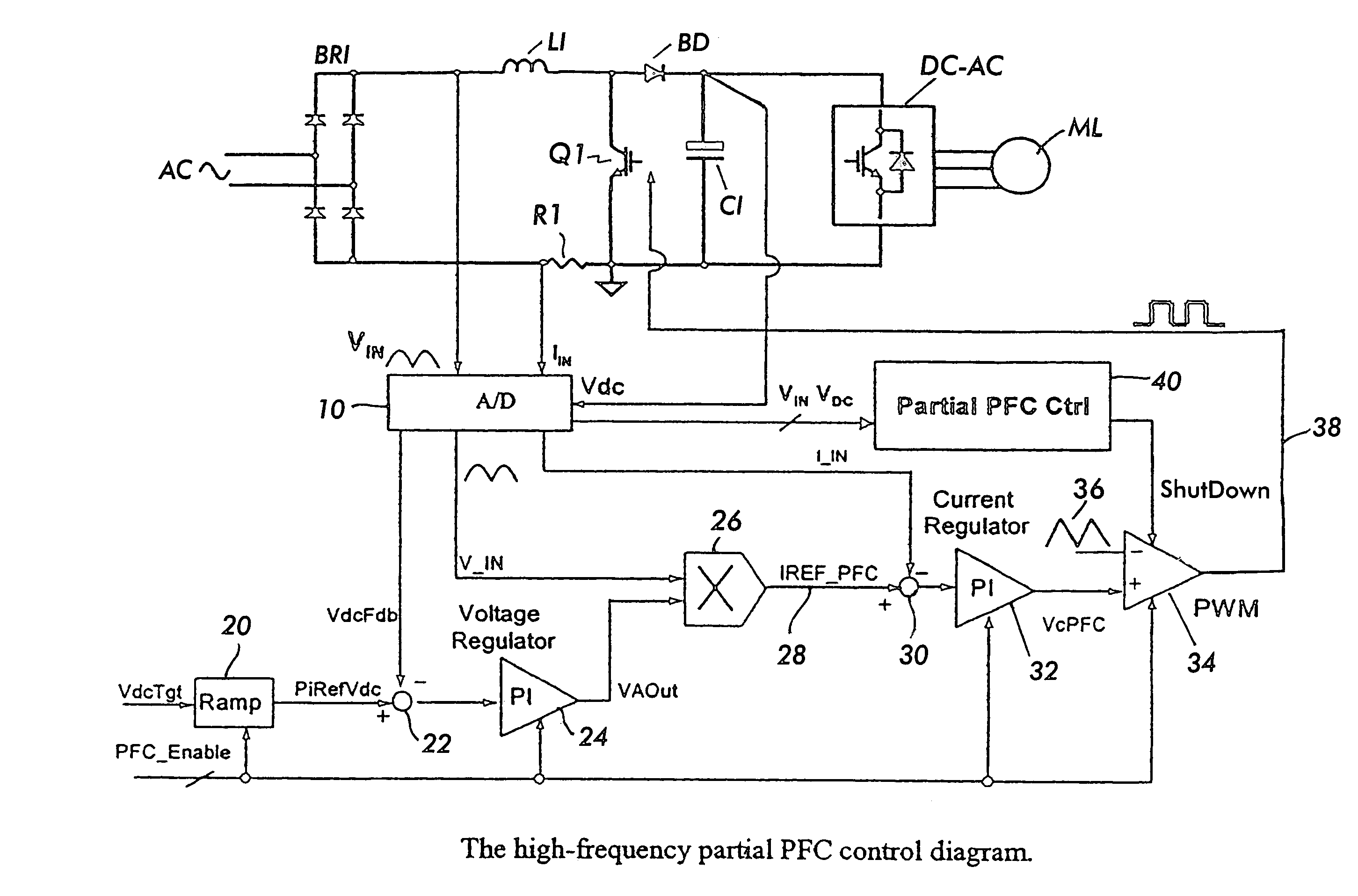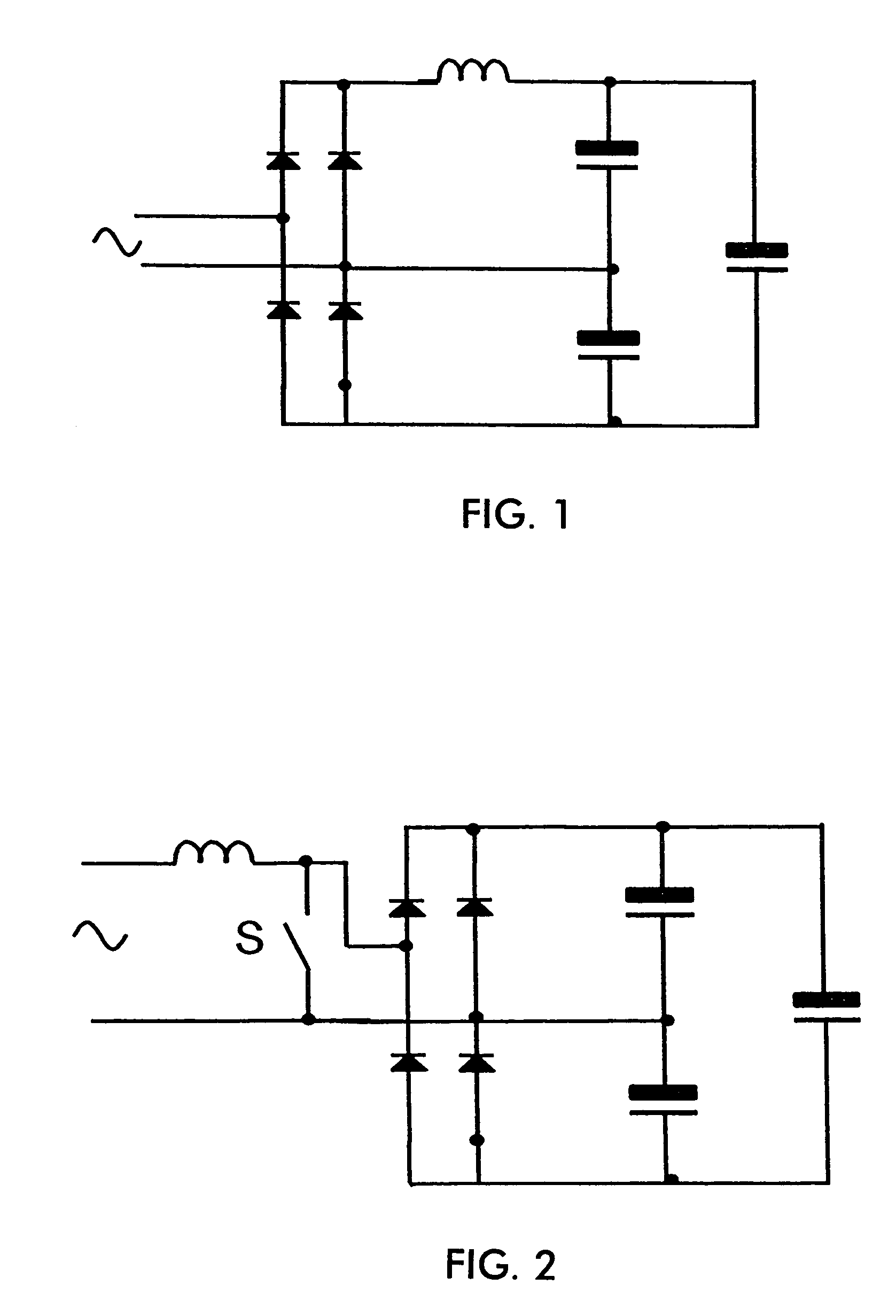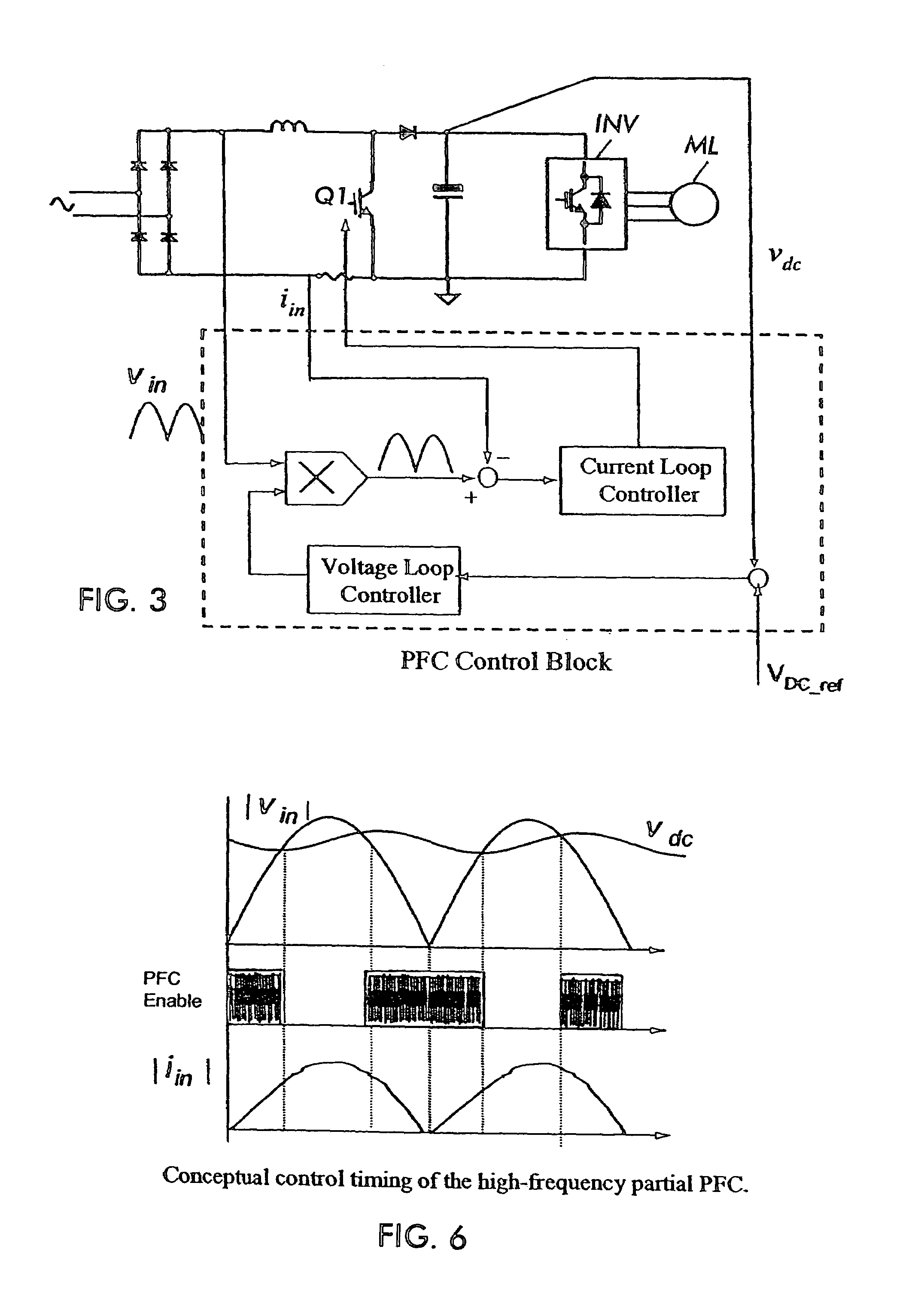High frequency partial boost power factor correction control circuit and method
a power factor and control circuit technology, applied in the field of power factor correction circuits, can solve the problems of increasing the size of the circuit, not meeting the requirements of today's regulation requirements, and high costs
- Summary
- Abstract
- Description
- Claims
- Application Information
AI Technical Summary
Benefits of technology
Problems solved by technology
Method used
Image
Examples
Embodiment Construction
[0018]With reference again to the drawings, FIG. 5 shows the PFC circuit according to the present invention. The circuit includes a bridge rectifier BR1 fed from the AC supply. The rectified AC is provided to the boost inductor L1. A PFC switch Q1 is coupled in series with the inductor and across the output of the bridge rectifier after the inductor. The boost diode BD is coupled in series with the inductor L1 and the output capacitor C1 is coupled at shown at the output of the boost converter circuit in known fashion. The voltage across the capacitor C1 comprises the DC bus voltage which is provided to a load which might comprise, for example a DC to AC inverter driving a three phase motor load ML, for example.
[0019]The output of the DC bus VDC is provided to an A to D converter 10 which has as inputs the DC bus voltage VDC, the current IIN in the inductor L1 as sensed by a resistor RI or by other sensing means, as well as the rectified AC input voltage VIN. The A to D converter pr...
PUM
 Login to View More
Login to View More Abstract
Description
Claims
Application Information
 Login to View More
Login to View More - R&D
- Intellectual Property
- Life Sciences
- Materials
- Tech Scout
- Unparalleled Data Quality
- Higher Quality Content
- 60% Fewer Hallucinations
Browse by: Latest US Patents, China's latest patents, Technical Efficacy Thesaurus, Application Domain, Technology Topic, Popular Technical Reports.
© 2025 PatSnap. All rights reserved.Legal|Privacy policy|Modern Slavery Act Transparency Statement|Sitemap|About US| Contact US: help@patsnap.com



